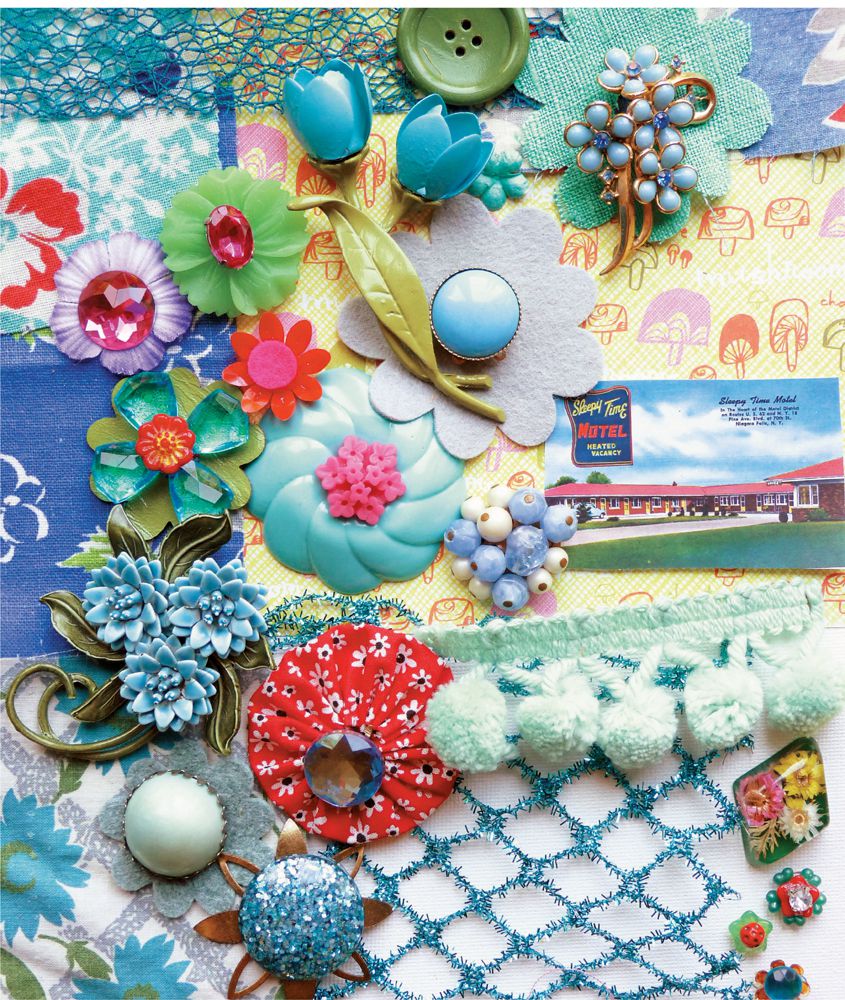


WHAT’S NEXT FOR YOU?

There is so much opportunity out there for creative people like never before in history. I am very excited for you. The Internet has democratized the playing field. It’s not who you know or where you went to school or the old boys’ network—you now have access. You now have access to decision makers and to information that had previously been difficult to obtain.
In this chapter, I’m going to guide you through creating goals and a timeline. I’ll tell you all about agents, and we’ll take a look at cool jobs that my agency has assigned to my artists. And I’m particularly excited to introduce you to my mother.
Get ready to make your plan for a future of creative success!
Having an agent can be one of the most incredible relationships in your career. In this section, we’re going to talk about what agents do and why the right agent is potentially so fantastic, who they’re good for, who they’re not good for, how to get one, and why I even passed on some great talent.
My agency, Lilla Rogers Studio, allows me to tap into so many of the things I love to do. I love mentoring. I love business, graphic design, and marketing. I love working with a team. I love making careers for my artists. I love getting whopping-great cool jobs for my artists, and making exciting deals happen. I love mentoring my staff. I love when several times a week we receive samples of products that the artists have designed; it’s like a party. I love technology and social media. I love playing a role in shaping trends. Know what else I love? I love discovering amazing, gifted talent that I have such respect for and making a living for them. How great is that?
An agent gets you work, bills the client, and pays you. At my agency, we have a whole assortment of promotional options for our artists, from a gorgeous 10,000-piece mailing to top clients, to exhibiting their work at a variety of trade shows. We have open houses, we visit clients, we have an online gift shop, and we’re always trying something new.
When you’re talking to an agent, don’t let your desire to be represented blind you. Think clearly, take your time. Call some of the artists the agent represents and see what they have to say. While you’re in talks with the agent, you want to find out what the deal is, both in terms of their percentage and what they do in terms of promotion. Find out what they expect from you.
Artists submit work to me and say such nice things about our agency. And the work is often great. Sadly, I just can’t respond to submissions unless we are seriously interested. We get thousands of submissions a year, and we only pick one or two. Some days we get ten submissions from around the world.
One of the top questions I get when I speak is, “How do you pick your artists to represent?” The answer is that we look for a strong, consistent style, and a fresh, unique point of view. Work that takes our breath away. We look for an artist who’s the best in that style, who is leading a trend. And they’re not a copy or a clone. They need to have a distinctive and recognizable style because we brand the artist’s look. That’s step one. Step two is seeing marketable potential in the style. I need to easily see specific clients of ours who would love, and commission or license, the work.
Our job is to provide the very best artists to our wonderful client base. And it’s good for us to have fresh new talent. It invigorates the studio and provides a service to our clients. So great talent is always needed!
Ninety-nine percent of the time, it’s artists emailing us to submit their work. I did get one of my artists from Etsy. Lately, I’m looking at Pinterest. I look at UPPERCASE magazine. I’m even thinking of contacting an artist I saw in a recent issue.
Thoroughly familiarize yourself with our website to see if you feel like it’s a good fit. Then you can go to the “About” page and read how to submit your work. In your email to us, you’re going to talk about why you want an agent and specifically why us. You’re going to include a link to your website and about five of your favorite JPEGs (72 dpi is fine).
Don’t copy a whole bunch of agents in the email. I know; obvious, right? It happens. Start with your first choice for an agent and work your way down.
I very often check my email on my iPhone. I cannot open a PDF on my iPhone. Do not send a PDF.
Do not send your image in CMYK because it will come in all black.
Do not send an email over about 3 megabytes (MB).
Do not have a website that is slow to load, or where we have to hunt around to get a quick view of your style. It needs to be fast. Your website tells me so much about your personality. If you didn’t have a good time making your website and see it as an opportunity to be creative, that’s not a good sign.
Unfortunately, I only respond if we’re seriously interested. It really hurts me not to be able to take the time to write back to everyone, having been on that other side. I know what it’s like to really put yourself out there. I was rejected by a few agents myself, back in the day!
If you don’t hear from me, I would say to try again in three to six months when you have new work because I will watch an artist. I may love the artist, but I want to see how that person grows. I might not even write back because I don’t want to get someone’s hopes up unnecessarily. You may not hear from me, but I may be keeping an eye on you. But if you don’t hear after a bit, you have every right to contact another agent.

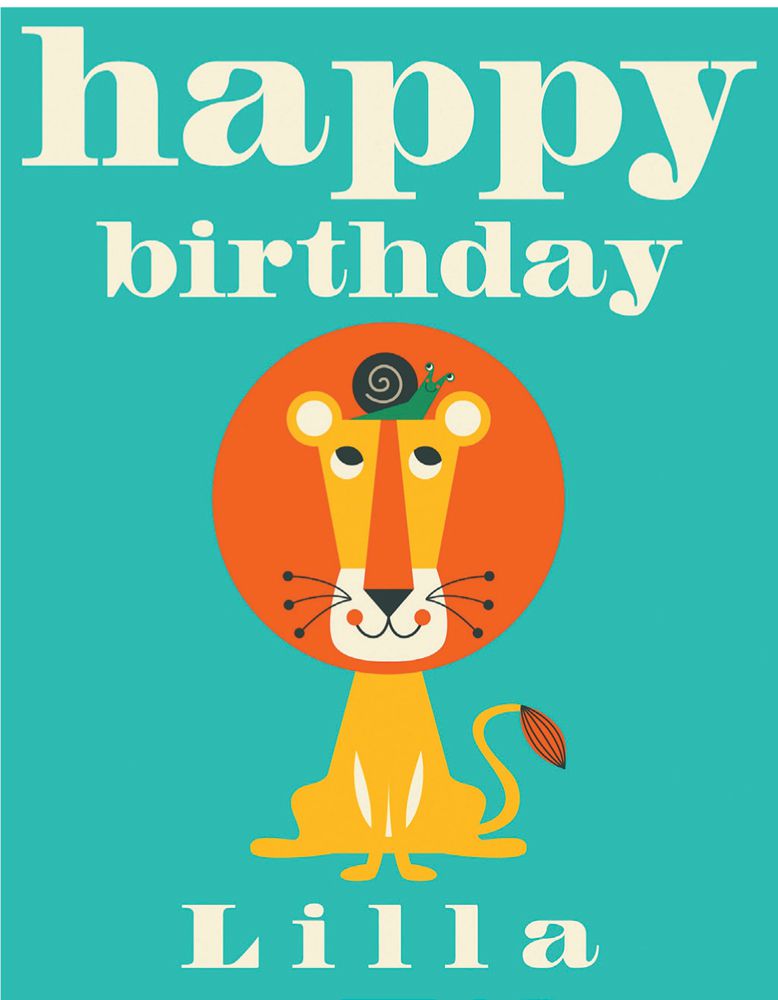
A perk of being an agent: I get the very best birthday cards in the whole wide world. (Art by Helen Dardik, above, and Amy Blay, below)
Because I love the mentoring part, my artists often Skype me, and we talk about what they can do to grow their work. I also love creating trend and inspiration reports for my artists. Every artist needs to stay inspired and motivated and get specific direction appropriate to their markets. I include a range of inspiration for every style I represent—whether it’s digital or traditional media, print and pattern for apparel, watercolor for editorial, or traditional or edgy style—focusing on what areas are most marketable and lucrative for my artists.
Agents negotiate the terms of contracts and manage the image rights. Say you sell the image rights to a stationery company, and we note that it’s available for other categories, such as wall decor and bedding. We can potentially sell the pieces as many times as possible and keep track of the intricacies.
An agent can make your career. An agent can provide so many amazing commissions and opportunities and keep you busy with work and handle all the business details; all you have to do is create. That’s the dreamy part of having an agent.
What? You have to keep your agent happy? Like any relationship, it takes two. A good agent really cares about you and likes when the artist expresses appreciation—when the artist realizes you’re both on the same team trying to get work for you. Sending new work regularly to your agent is your end of the bargain—to continue to grow your work and stay inspired. Agents want a real professional, somebody who can talk about issues that may come up in a friendly way. We give 100 percent, and it’s in our best interest to do our best for each and every artist we represent, so it’s important we’re both on the same team.
We expect to work with an artist who has a high level of emotional maturity. Just as we’re not the only agent in the world, there’s no one artist who is indispensable. No artist is worth negative energy or emotional stress. If an artist is too difficult—complaining, unappreciative, whining, not meeting every single deadline—it’s not worth it when we have other artists beating down the door. Our standards are very, very high. But that’s only because that’s what it takes to get the artist the work they deserve.
We keep our artists happy by constantly doing our best to find every income opportunity we can. We regularly update our artists on our promotions, our marketing strategies, and our trade shows. We send emails about what clients are looking for. We do social media, websites, e-newsletters, and blogging. And I’m available to help mentor the artists with their artwork and have them come meet me anytime to talk about their work. That’s what an agent does.
An agent works to get you lots of great jobs. That’s the main thing.
Another way we keep our artists happy is by expressing our appreciation for how great they are to work with and how much we love their work. We know they work in isolation, so we want to be there for them. We’re not their therapists—this is a professional situation, and we’re here to get them work—but we are their creative supports in their life.
When an artist is slow, I always suggest that they don’t say to their agent, “Why aren’t you getting me more work?”
That can put an agent on the defensive. I guarantee that if you give us great art and it’s marketable, we will get you work. It’s better to say, “What can I do to get more work?” If you make it all about us, the agency, you’re giving away your power. By asking what you can do, you’re owning your power. Then we’re happy to come up with strategies and markets for your work that we think will help get you work.
Can an agent keep you so busy with work that you make your sole income from your agent?
Some artists yes, some artists no. Some artists have other streams of income, such as teaching or selling on Etsy.
The best way to get terminated from representation is to go around your agent, like taking a job without contacting your agent. Number two: Missing a deadline. Why is this? We need to stand behind our artists all the way. We need to be able to say to our clients, “This artist is great to work with, she’s amazing, and she meets every deadline. She’s a pleasure.”
So by now you’re probably drooling about wanting an agent. But agents aren’t for everybody. If you’re a powerhouse and love to do every aspect of business, by all means go ahead and do it yourself. If you don’t like to relinquish control, don’t get an agent.
We sadly have to pass on many amazingly talented artists. But just because we don’t take on an artist is no reflection on their work. It just may be we are all flat-out busy; at another point in time we might actually have taken that artist on. Or maybe we just recently took on an artist and need to devote our time to getting them settled.
Here are some stories about artists we passed on who went on to be successful—and I’m really happy about that because I want every artist to do well.
1. Some time ago, we seriously considered an artist, but we ended up passing on him. He wasn’t what I was looking for at the time. I thought he might not be commercial enough to make money. Boy, was I wrong! He went on to be represented by a rep (who I admire), and he is among her top income earners. And I’m really happy for both of them.
2. Case number two: I was approached by an artist whose work I loved. But she had more of scrapbooking/painterly/collage look than what we were doing at the time. She went on to do fantastically well on her own with product lines by licensing her work for major manufacturers in the gift market. She also wrote an art book that was extremely well received. I adore her and we’re friends. Recently I told her, “See? You didn’t need me!”
3. Another story: An artist submitted her work and I really liked it, but I had a sense that she had bigger fish to fry. She seemed to have a lot of drive and savvy. She’s now gone on to publish a handful of very hip and wonderful art how-to books that are a great contribution to the field. I couldn’t be happier for her. While I might have helped her with all that, I think she found her niche—as a writer—and has done fine.
4. Case number four: An artist submitted her work. I loved it, but this was about ten or fifteen years ago, and she was 90 percent print and pattern, which we weren’t into yet. I didn’t want to take her on because I didn’t feel it would be fair to her if we didn’t have contacts in that field.
I don’t need to represent every great artist. I’m happy for other agents and their artists to be successful, too. Why not spread the love? It just invigorates the field for everybody.
We never pick up the phone and instantly say, “Hey, we’re taking you on.” We start a conversation. First, we send a PDF all about representation at Lilla Rogers Studio. Then we have a dialogue; I encourage questions. This is a great time to be clear and open.
I allow for the process to take a few weeks so the artist can ask everything and we can ask everything so all parties are sure it’s a good fit.
P.S. I call representing artists the “adoption program.” We grow to care deeply about them.
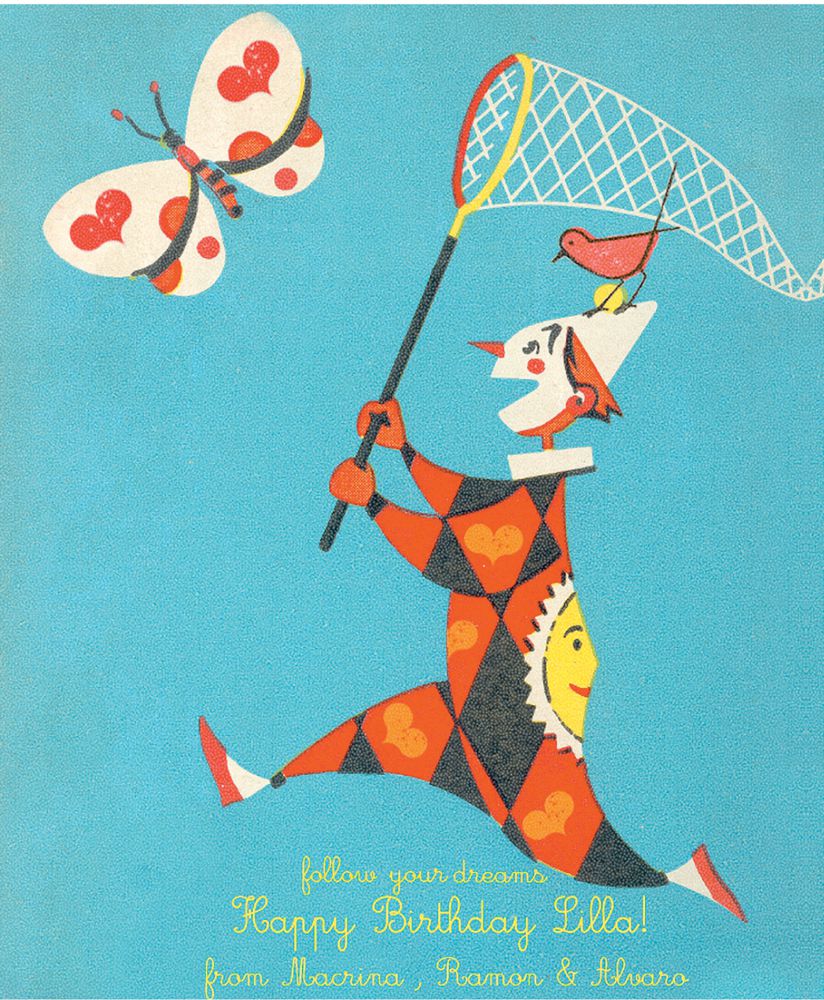
Art by Macrina Busato
Making your work more commercial does not mean selling out. It means adapting it to the marketplace while keeping your style and sensibility.
You’ve heard “dress for the job you want.” Well, how about “make art for the kind of gigs you want”?
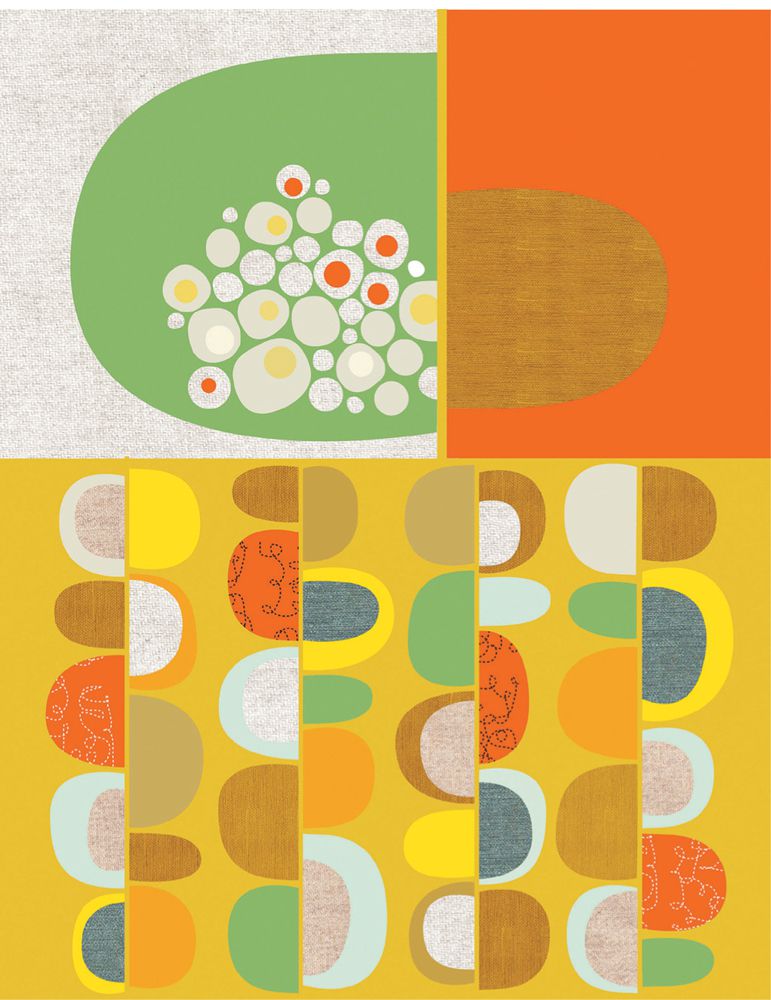
This is the kind of fabulous work that our artist Jenn Ski was creating when she came on board with our agency.
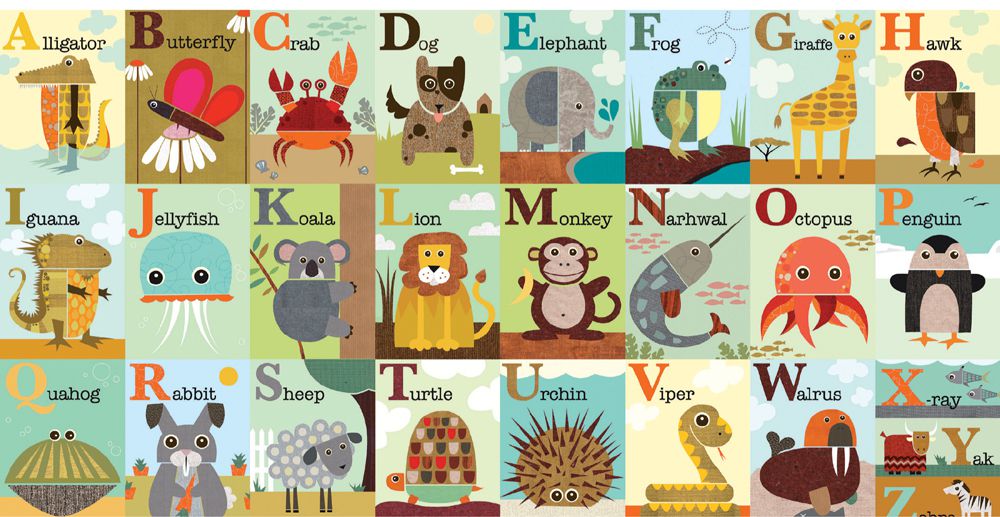
We discussed how ABCs were in demand, and I felt that if she viewed animals as simply geometric shapes to design, in the same way she designed her prints, that she could make something really magnificent. Which she did. She’s gotten tons of jobs from this piece, such as wall decor, bolt fabric, a line of greeting cards, and a scrapbooking collection. Wow!
You never know what’s out there or what kind of work you’ll get.
Take a look at the diversity of work that we got for our wonderfully talented artist Lisa DeJohn: Godiva packaging for the spring collection; art for a water tower for a residential development in Albuquerque, New Mexico; a series of covers for the Land of Nod.
Great jobs we’ve gotten for our artists, just to show you the kinds of things that are out there:
• 180-degree wall mural art for the Children’s Room in the New York Public Library
• Art for cereal packaging and ads for Kellogg’s All-Bran
• Ornaments for Crate & Barrel
• Paper lanterns
• Target gift cards
• Kids’ bedding
• Art for the entire interior design of a European restaurant chain
• Temporary tattoos

Our artists’ work has been seen on TV shows and movies including:
• Modern Family
• Arthur
• Julie & Julia
• Breaking Bad
• The Proposal
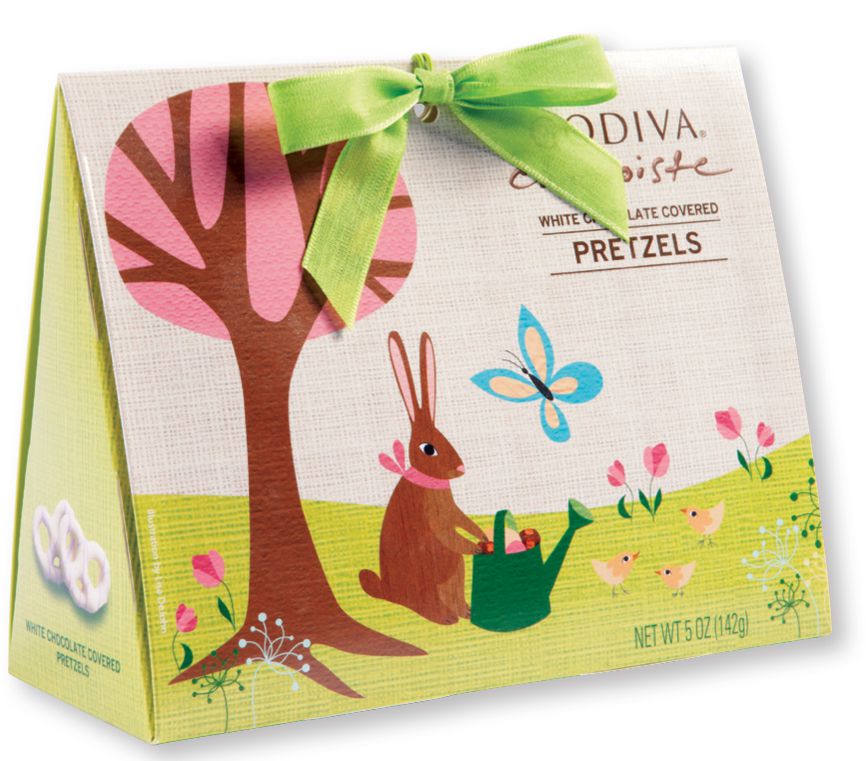
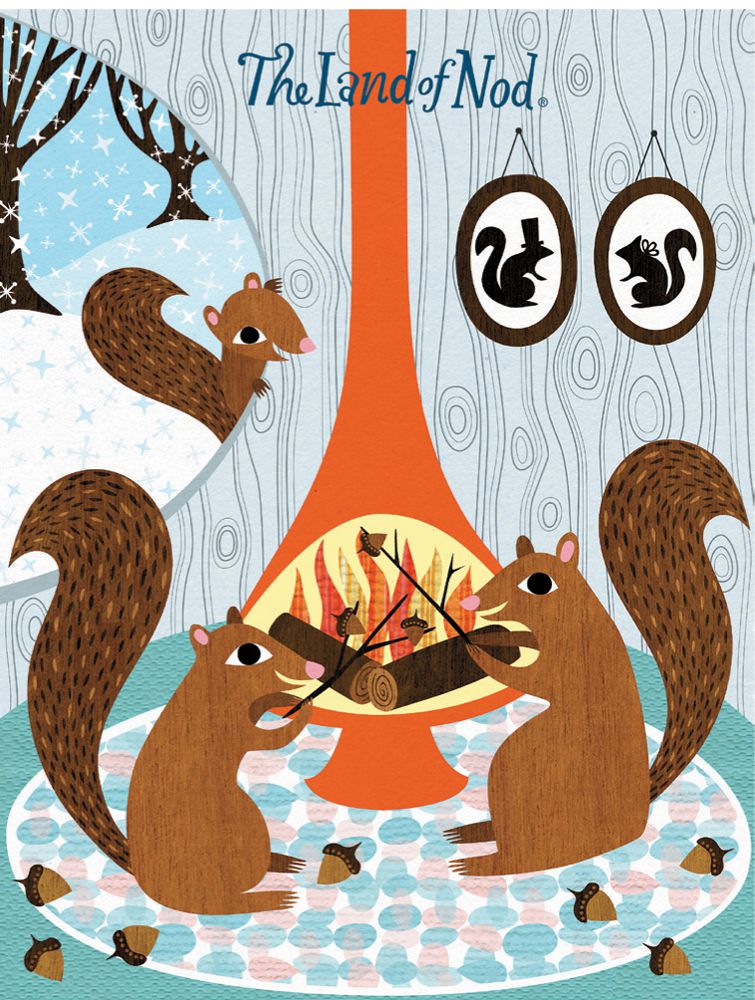
All art on this page by Lisa DeJohn.
Kelly Rae Roberts is a writer and painter whose work is just gorgeous. Her art is licensed to many different companies for a variety of products, including mirrors, wall art, figurines, sketchbooks, and necklaces. But she also does very well with her brilliant online classes.
What’s the most fun and exciting aspect of your career?
I would have to say it’s having my work licensed for large gift and home décor lines. I feel completely giddy when new products debut, and I just love seeing them displayed in the trade show showrooms.
What’s the most lucrative?
About 50 percent of my income is through licensing deals and the other half comes from online e-courses that I teach and e-books that I write and sell.

Art by Kelly Rae Roberts.
What area is not as lucrative as some may think?
Many people assume that I make a lot more money than I actually do through licensing. And people are always very surprised to learn that I sometimes make more money a year through my information business (e-books and e-courses) than I do through my art business (licensing, online sales of art, etc).
You stopped doing your online store. Why?
My online store was very, very busy—about 150K in sales. But I have my hands in a lot of different income streams, and this particular one was becoming quite high-maintenance by requiring a ton of my time and energy (even with a couple of employees). There came a time when I needed to either hire more help (including deferring the marketing of it to someone other than me) or scale back. I choose to scale back because I wanted to start putting the energy and time toward other big ideas and projects.
You do so many different things. Why is diversifying important to you?
It’s a lot to juggle, but it’s worth the financial security. I currently have many streams of income (licensing deals, book royalties, sponsorships on my blog, e-courses, e-books, print/original sales, and more). Sometimes it feels like each is its own mini- (or not-so-mini-) job, requiring its own creation, marketing, etc. But I try to set up as many passive streams as possible. For example, my Flying Lessons e-course was a ton of work when I first created it, but its content has gone on to make a lot of passive income for me via downloadable e-books and more e-courses.
What should artists know about doing a line with a manufacturer?
That your voice has to come through in the most authentic way possible. I deeply believe that energy translates. When we make art, the intention behind it can absolutely come through in manufactured products, but we have to be super vigilant about making sure that intention and energy is preserved in the development, the promotion/marketing, and the branding
How much promotion do you do of the line and how much does your manufacturer?
I try and do my part by blogging about the lines, social networking about them, sending out newsletters, and that kind of thing. I love it when new products come out and you can often find me styling them, photographing them, and then sharing them online via my networks. I happen to love this part of the process. It doesn’t feel like marketing to me. It feels more like I’m sharing a fun part of my life with a friend.
How often do you pitch or send new work to your manufacturers?
I send new artwork to my contacts as often as I make new work. I’m steadily sending in new work and ideas.
How do you use social media?
Social media can be very effective when used well. Outside of blogging and newsletters, I find that Facebook is the most effective. I’ve slowly built a Facebook following (over 10,000), and I use it to announce new work, new blog posts, new sales, as well as everyday life updates and photos. I find it’s a great interaction with my audience. I’ve learned to check it when I check my emails and that’s about it, though—so about 15 minutes a day tops.
Who helps you run your business? What do they do for you? If you could hire anybody, what would they do for you?
I have a studio assistant who helps with emails, orders, and all sorts of administrative tasks. Other than that, I hire all sorts of other independent business owners to help me with various aspects of my business: web programmers, web designers, surface pattern designers, and printers.
What is your best advice for other artists?
Trust your voice. Surround yourself with people who are supportive, gracious, and who believe in abundance of all kind. Pretend until you’re not pretending anymore. Put yourself out there. Find your way with an open heart.
YOU CAN’T CONTROL HOW MUCH MONEY YOU MAKE, BUT YOU CAN CONTROL YOUR ACTIONS, PLANS, AND GOALS.
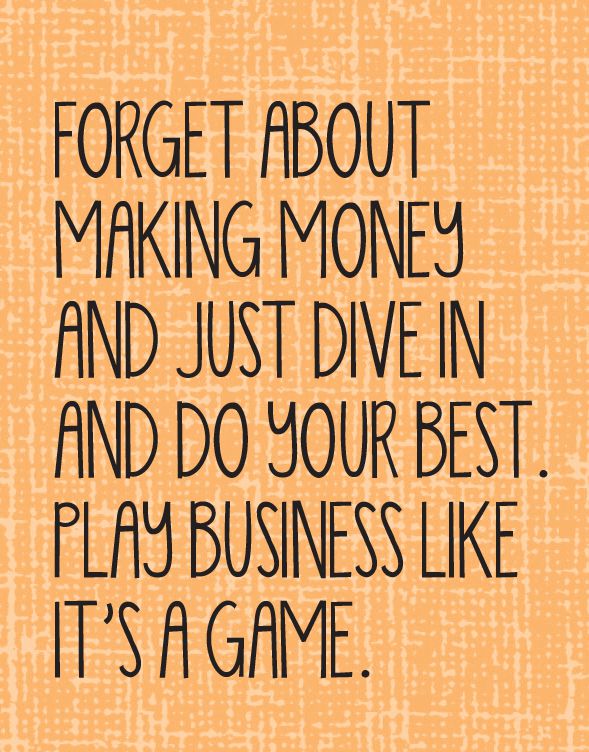
1. Get inspired and make great work that you love.
2. Select the market you are drawn to and that’s a great fit for your work.
3. Get the names of companies from your favorite shops, online, and/or attending trade shows (see Trade Show chart on page 92) or buy a list from a company such as agencyaccess.com.
4. Adapt your work to suit to the needs of those companies, or of that particular market, while maintaining your aesthetic integrity. Go to their website and follow their submission guidelines.
5. Send your work to those companies or exhibit at a trade show.
6. Stay in touch via e-newsletters, postcards, and social media.
7. Repeat.

Art by Jennifer Judd-McGee.
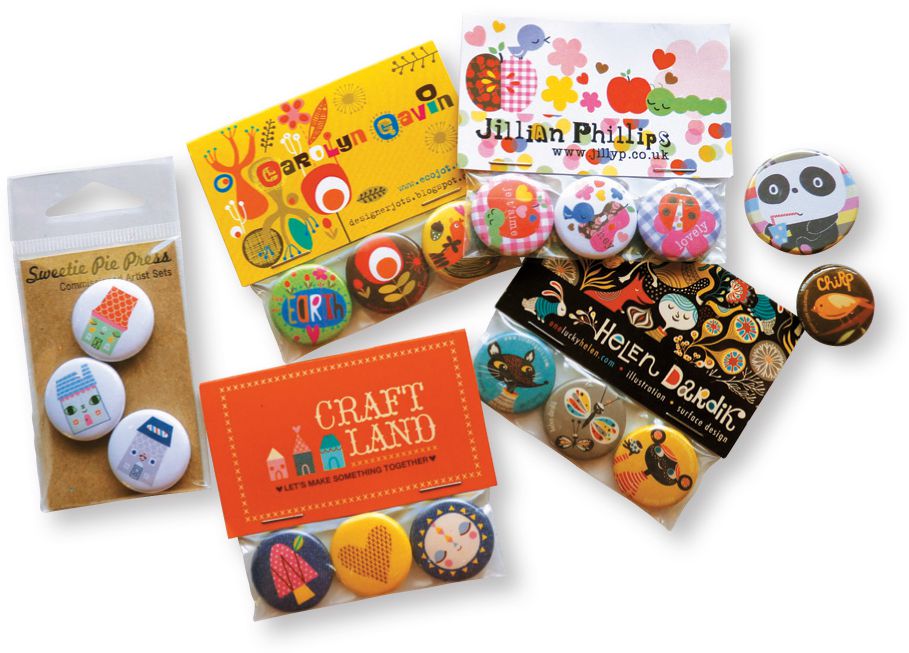
My artists enjoy making these button sets for give-aways at trade shows. They work as a gift promotion and a business card rolled into one.
“It’s a big world out there, honey.”
(Don’t feel limited.)
“One thing leads to the next.”
(You never know what’s coming next.)
“You’re sowing seeds.”
(Things take time, but you’ll reap the harvest later.)
I asked my mother—a painter, lively soul, and successful entrepreneur whom I talked about at the beginning of this book—what advice she had for beginning artists. She said, “I guess what I’ve learned about my own life, and my own accomplishments, is that when I had real passion for something, it made me focus dead on. And I worked hard at that regardless of other interesting intrusions. If a young artist really has a passion to make art in some form, that will carry them through. They may not make a living with it right away, or they may not have the success or the fanfare that they’re looking for right away. But the chances are very good they will achieve it. Chances are they won’t achieve it if they’re just doing it as a dilettante. That’s true about almost anything we set our sights to in life.”
My mother, Jacquelyn Rogers, studied painting with Stuart Davis at the New School in New York and then worked in advertising in the 1940s (a real-life Mad Men Peggy). She went on to create the innovative international smoking cessation program Smokenders in the 1960s from her own struggles and eventual success in quitting smoking. In addition to leading worldwide seminars, she gave private Smokenders coaching to Leonard Bernstein, among many others.

A painting by my mother, Jacqueline Rogers, circa 1960
Mom, tell the story about that meeting in New York and the luncheon.
In the late ‘60s, early ‘70s, it was unusual for a woman to be a head of a business or even a lawyer or doctor, for that matter. Once I had a meeting of my board in New York, which involved an attorney, an accountant, a businessman, and a banker.
All men, right?
Right. We met at the banker’s elegant office to set up an IPO. After a stimulating and productive meeting, we broke for lunch. A short walk down Wall Street brought us to a private club. The banker rang the bell and a man dressed in butlers’ attire welcomed him.
Banker to Butler: We’d like lunch for six.
[Long uncomfortable pause.]
Butler: [Panicked] I’m sorry Mr. So-and-so. We don’t accept women.
My guys had forgotten I was a woman, having worked with me so productively and successfully. Finally, the butler took us around to the back door and let us lunch in a private room.
Mom, you were their client! You paid them! And yet you were marginalized. Did it make you really angry? Hurt?
I believe that perhaps it was a good thing in terms of educating these high level guys. It opened their eyes.
I’m proud of her and the inroads she helped pave for the rest of us.

A painting by my mother, Jacqueline Rogers, circa 1960.
Okay, you tried self-assessments and thoughtful journaling. But how about we give chance a chance? I’ve created a little tarot card-style game for you, both for fun and possibly to garner some self-awareness.
Directions: Photocopy the cards at the right onto cardstock and cut them out. Add anything you like to the blank cards. Turn them upside down and shuffle them around. Meditate or just calm your self with breathing for a few minutes. Smile, as Thích Nh t H
t H nh says: “Smile, breathe, and go slowly.”
nh says: “Smile, breathe, and go slowly.”
Then, keeping the cards facedown, pick up five cards, one at a time, and put one on top of the next in a little pile. Let your hands do the picking. Now turn them over one by one. The first card you turn over is the thing that is most important for you, and so on.
Are you surprised? Do you secretly wish a different card had come first? If so, make notes of all the feelings you have. Your instincts are the best indicator of what you really, deeply want to do next.
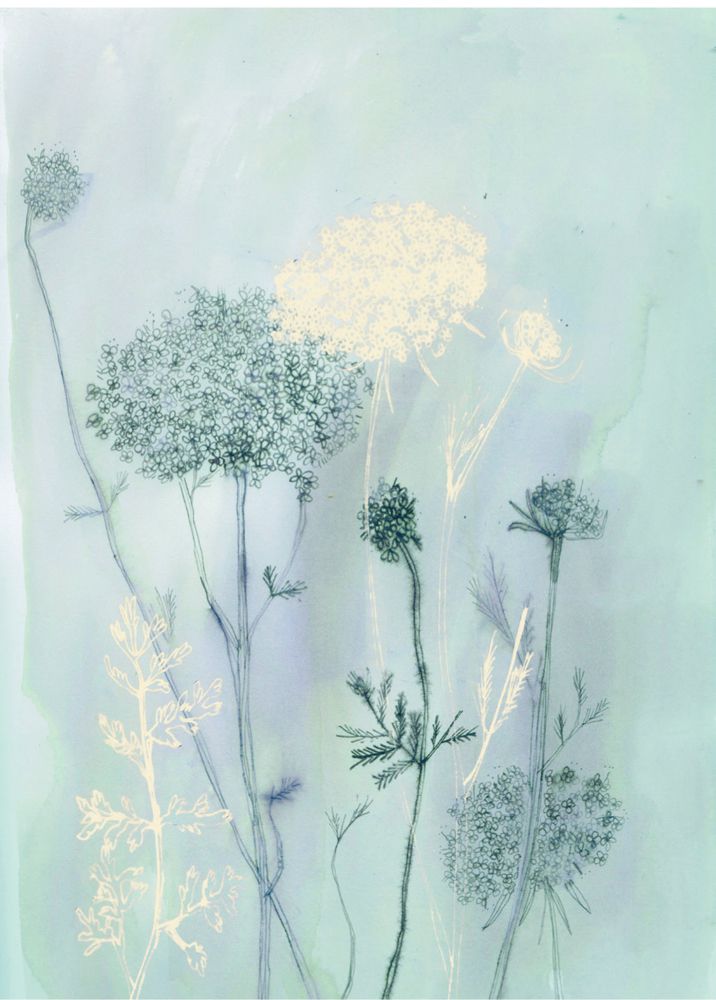
Rebecca Bradley
SMILE, BREATHE, GO SLOWLY.
Write your five-year goal, one-year goal, and one-month goal.
It’s great to think big. But if you think too big, you stress yourself out with undue pressure. If you think too small, you may be underestimating your potential. So how do you know how big or small to think? In part, you will feel the hunger in your belly. You want your passion and drive to be reflected in your goals.
At the same time, we all know people who have a new idea that they’re desperate to do every week. They are superexcited and then it peters out. There’s no follow-through. That’s often because the idea isn’t the right fit, their skill set doesn’t match, or the motivation doesn’t come from a deep place.
You know how when you were a kid in a car looking out the window and the moon followed you along but the trees flew by quickly? That’s how to think of the purpose of your career, your mission statement. Your mission statement is the moon and the activities are the trees.
Remember the fifty birds I spoke about in the beginning of this book? Think about what those fifty cool events in your career might be. Now it’s time to put all your hard work into a plan for your creative success.
Think about your career as a process. Each thing you work on leads you to getting better, which leads to the next thing. You may find that visualizing a timeline helps you to care a bit less intensely about each particular project or event. Then, you are freer to relax and enjoy.
Here’s an exercise to help you:
1. Draw a horizontal line in the arrow below.
2. Put a dot in the middle to represent the present moment.
3. Working from the left, start with a few jobs, commissions, classes, or projects that you’ve done in the past. This might be anything from knitting a hat, doing a painting for an e-course, or doing illustrations for a book, for example.
4. To the right of the dot, add projects you would love to do in the future.
5. Savor the possibilities.
Best of luck in your career!
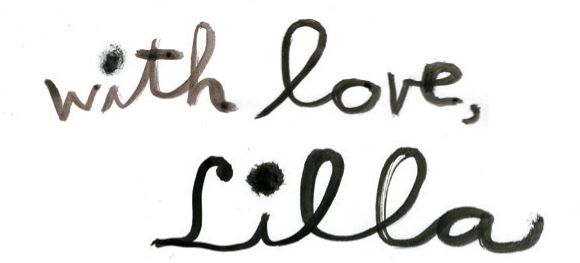
P.S. I would love to hear your feedback, comments, and questions about the book. Send them to book@lillarogers.com.